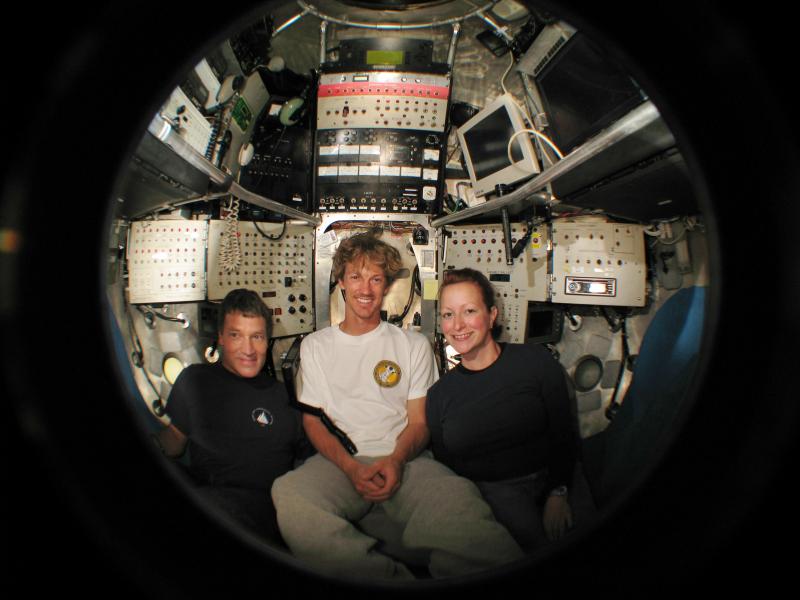Bigelow scientist rides human submersible Alvin to the Pacific seafloor
Dr. Beth Orcutt is getting another chance to see life at the bottom of the ocean.
Aboard the human submersible Alvin from the Woods Hole Oceanographic Institution, Orcutt will be part of a scientific team investigating long-term observatories embedded deep below the seafloor on the Juan de Fuca Ridge in the Pacific Ocean off the coast of Seattle, Wash.
Orcutt, a senior research scientist at Bigelow Laboratory for Ocean Sciences, will be aboard the research vessel Atlantis from August 8-25, and has previously ridden Alvin to the seafloor on three separate occasions. Orcutt will be using Alvin to collect samples, to recover and deploy custom experiments, and to collect data to examine microbial life in this extreme environment.
The Juan de Fuca Ridge is a 300-mile stretch of underwater volcanic mountain range off the coast of Washington and Oregon that was created by the separation of the Juan de Fuca and the Pacific tectonic plates. Orcutt will be collecting samples from stations along the flank of the plate about 100 miles away from the Juan de Fuca Ridge and several hundred meters below the sea floor.
“We are visiting observatories that were installed many years ago, some in 2004, others in the 1990s, but the most important of which were installed in 2010 through Expedition 327 of the Integrated Ocean Drilling Program,” Orcutt said. “Our experiments are designed to figure out what microbes are present and what minerals they like to eat.
“Ocean crust, by volume, is the largest potential habitat for life on Earth, yet we know very little about the microbes that live there.”
The scientific team includes Orcutt and researchers from the University of California campuses in Santa Cruz and Santa Barbara, the University of Southern California, the University of Hawaii, the University of Miami, the University of Mississippi. Geoff Wheat of the University of Mississippi is head of the scientific team.
The research cruise’s mission is threefold: to study how water moves in the subsurface, the general chemistry of the environment, and the microbial community in this part of the Earth’s crust. The expedition is funded by the National Science Foundation. The expedition's progress will be reported daily on Twitter: @DeepMicrobe.
“Journeying to the bottom of the ocean is an amazing experience,” Orcutt said. “It's like visiting another planet.”






























